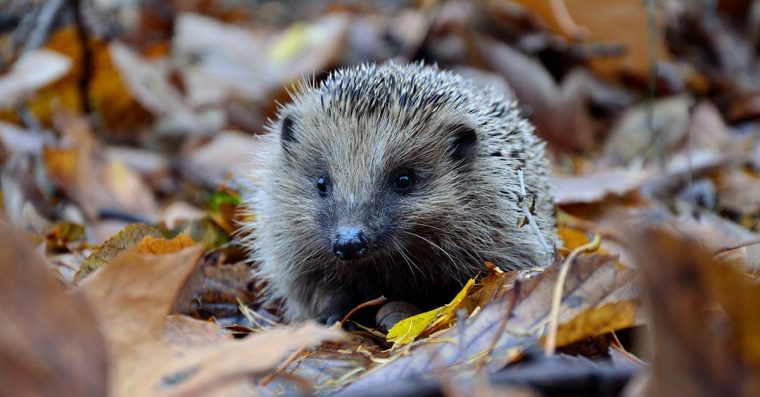Printed from: https://finalhbks.asgoodasready.com/make-your-garden-a-home-for-hedgehogs/
The number of hedgehogs living in rural areas has plummeted by more than half since the year 2000.
This comes from a recent report released by the People’s Trust for Endangered Species and the British Hedgehog Preservation Society, based on data from surveys. There are an estimated one million hedgehogs in Britain. That represents a 97% decrease from the 30 million that used to be around in the 1950s. Urban populations have fallen by up to 30% and rural populations by at least 50% since the turn of the century.
Intensive farming – habitat loss like hedgerow removal – is one of the causes. This leaves hedgehogs without shelter to nest and hide from predators and, most importantly, without a food source. It is estimated that up to 150,000 hedgehogs are killed by vehicles every year.
Despite this, hedgehog decline in urban areas has been less drastic and populations have appeared to reach some sort of stability. With a little help, we might even see an improvement in the number of these little prickly friends around towns and cities.
This suggests that they have managed to adapt and survive by making cemeteries, wasteland, railway land and public and private gardens as homes.
How can we help hedgehogs?
As they are a garden-friendly creature and do not have a fight-or-flight response, it is easier to make them a space to come and go. Keep in mind that hedgehogs tend to be roundabout animals, so the probability of having the visit of the same individual is very low. They are quite conspicuous and make their visits usually at dawn.
Making your garden a Hedgehogs-friendly one could be very easy:
- Cover drains and holes and try to build barriers around any potentially dangerous space in your garden.
- Leave some areas of wilderness where the hedgehogs can snuffle for insects like beetles, caterpillars and earthworms.
- Avoid using slug pellets as they are poisonous.
- Keep a dish of clean water available, especially during the summer or extremely hot or dry conditions.
- They’ll enjoy a supplement to their natural diet. Wet dog or cat food and dried cat biscuits are good. Avoid dog biscuits as they can make hedgehogs fat. Specialist hedgehog food, such as Spikes, is also available.
- Hedgehogs should only be given water to drink, not milk!
- When tidying the garden, take care when moving piles of leaves and other garden rubbish as these are ideal places for a hedgehog to make its nest. Create your own habitat piles or hedgehog house in a quiet place for them.
- As garden ponds and swimming pools can be risky for hedgehogs, ensure that there are several sloping sides around the edge of the water to enable hedgehogs to escape if they fall in. A piece of chicken wire will work for them as a scrambling net to get out of water.
- If you have sports nets in your garden, roll them up when not in use to avoid them becoming entangled.
Bonfires
If you celebrate Hallowe’en or bonfire night with a bonfire, check underneath before lighting them.
Hedgehogs love to build nests under piles of leaves and twigs – and a bonfire looks to them like the perfect place! Build your bonfire the day you burn it to avoid hurting them.
Connecting our gardens
Hedgehogs walk about 1 or 2km at night. They sometimes move during hibernation, especially when the weather is a bit warmer. A small hole (about 13cm by 13cm – or the size of a CD) in your garden wall or fence will let hedgehogs through, but be too small for most pets.
Hibernation season
Hedgehogs usually hibernate between November and mid-March.
Be sure that they can find enough food during spring and summer visits to have enough fat reserves to survive hibernation. They like to nest under things like sheds, hedges and brushwood and need plenty of dry leaves to build their nest.
What to do in case of injured hedgehog
If you find an injured hedgehog, first cover your hands with thick gardening gloves and pick it up by holding it in both hands around the middle, scooping it up. A cardboard box lined with newspaper will work well to keep it safe while you take it to the vet. Put a small towel or tea towel inside for it to hide under.
In cases where the hedgehog is not injured but you find it very poorly or cold, repeat the cardboard box process and give it warm water and a towel to snuggle up to.

